(first posted 7/1/2014) To celebrate Canada Day, I thought I would provide a primer on some of the unique Canadian Ford makes and models. In the United States Ford marketed three mainstream brands–Ford, Mercury and Lincoln–but in Canada, things got more complicated with up to six brands. Two more makes could be added to both totals if we include short-lived Edsel and Continental when it was a division. Why all the brands? Follow along to find out.
Canadian geography plays a large role in this story as we have many small towns separated by large distances. These small towns would generally have either a Ford or a Mercury dealership but usually could not support both. Creating an additional brand for each meant Ford could offer something a bit more upscale in the traditional Mercury market. Likewise, Mercury dealers could offer more basically trimmed cars without cheapening the brand. Thus Ford Corporation could compete across the entire spectrum of the market with a smaller set of dealers. The additional brands were Meteor at Mercury and Monarch at Ford shops.
It did not start that way however. In 1946, Mercury was given a smaller, low priced car to sell based on a Ford but with Mercury style trim. Sold from 1946 to 1948, this Mercury was given the model name 114 which denoted its shorter wheelbase. The above example has been mildly hot rodded, but it is not easy to find curbside examples.
I did see this 1948 four door sedan at a car show a few years in a row.
While the 114 was badged as a Mercury, this changed in 1949 as a new, smaller Ford-based car was sold under the Meteor name but still at Mercury-Lincoln dealers.

These Meteors used the flat head Ford or Mercury V8 engine until 1955 when the new overhead valve V8 engine replaced it.
A Ford-style dashboard in the same 1951 Meteor.
For 1952 Meteor line up received the new, updated Ford body shell. The above 1952 Meteor Customline Convertible is an extremely rare car as 1952 production was reduced due to the Korean war and convertibles were never common in Canada. This car is probably one of a hundred or fewer convertibles produced in that year. The trim portion above the grille should be a painted piece on the Meteor rather than chrome shown here.
Starting in 1954, the Meteor models received Canadian models names like Niagara and Rideau. The Niagara was named after the Niagara Falls region and Rideau after the historic canal in Ontario.
1955 brought an updated grille.
This shows off the optional multi-tone paint schemes quite nicely. Rumor has it these 1956 Meteors offered the most factory paint options of any Ford vehicle ever with all the dual and tri tone combinations theoretically available. A base six-cylinder engine was offered for the first time in 1956.
The 1957 Ford body shell with unique Meteor grille and trim. Wheels and yellow fog light are aftermarket items.
1958 brought dual headlights and another new grille as featured on this Rideau four door sedan.
Continuing with the patriotic naming theme in 1959, the Meteor Montcalm was named after the famous French general Louis-Joseph de Montcalm. Based off the Ford Galaxie, it offered additional chrome and an overall look in keeping with the Mercury line.
For 1960, the Ford body shell was sported an all new look with the twin headlights moving to the grille. Scalloped sides gave it a less boxy look than the 1959s. Meteors inherited these changes again with their own unique grille and trim. The side mounted chrome on this Rideau 500 gives an extra dash of style and is unique to the Meteors.
After 1961, things start to get a bit complicated as the United States Mercury brought out a low priced car called the Mercury Meteor. The Canada-specific Meteors disappeared at this time until the Mercury Meteor was discontinued after the 1963 model year.
Re-launched in 1964, Meteor now wore a Mercury body shell but with a Ford dashboard and interior to achieve a lower price than a Mercury branded car. The above snow covered 1964 Montcalm example sports some incorrect Lincoln hubcaps.
More Canadian model names like Rideau returned in 1965. Montcalm and LeMoyne were the other higher trimmed models with LeMoyne occupying the top spot. The Meteor make was slowly losing importance as time went on since the mild trim and grille changes offered little differentiation from the Mercury models they shared the showroom with.
A minor style refresh for 1966 is displayed in the weathered example above. The flatter hood, revised grille and smaller front turn signals are the most obvious changes from 1965.
Minor styling updates again followed for 1967.
For 1968, the inline six engine was no longer offered.
The convertible was dropped in 1971 when the Meteor became essentially a Mercury Monterey with a Ford interior and only a few badges to differentiate it. Later, the Rideau and Montcalm lines were phased out.
Mercury badges had started being phased in over the years and Meteor officially stopped existing as a separate marque after 1976. This 1974 two-door is near the end of the line but pretty much identical to its American Monterey cousin. The Meteor name existed as a low priced model variant on the Mercury Marquis until 1981.
Mercury also sold the full line of Ford trucks from 1946 and 1968. In general these were exactly the same as the equivalent Ford truck but with different badges and perhaps a grille variation depending on the year. The model naming convention was similar to Ford but M was utilized instead of F, so F-100 became M-100 for example. Mercury sold the full Ford truck line up including heavier duty cab/chassis models as well as vans for most of this period. The Mercury-badged vans seem to be less commonly seen than the trucks.
Over at the Ford side of the house, the companion marque was dubbed Monarch. Monarchs were offered for sale starting in 1946 as a higher priced, most luxuriously trimmed alternative for Ford dealers to offer.
Essentially, it was a 118 inch wheelbase Mercury body shell car with Ford trim, tail lights and a little extra chrome. The standard engine was a 239cid Mercury V8 making 97hp. Above is a 1949 example.
Starting in 1949, Monarch adopted a lion badge and moved to the new Mercury body shell but again with a Mercury rather than Ford dashboard. Note the leaping lion hood ornament which is rather similar to the more famous cat found on many Jaguar bonnets. The flathead V8 engine was enlarged to 255cid and 110hp.
Unlike US market Fords, optional two-tone paint was offered giving the Canadian cars more flair in the color department. The fenders and lower portion of the body were painted in the contrasting color.
Like their Mercury Eight cousins, the 1949-1951 Monarch sedans feature center-opening suicide doors. Shown above is the larger new grille for 1951.
1952 saw an updated body shell as well as a boost in power to 125hp. Only minor changes were made to 1953 models like the one above. In 1953 and 1954 Monarch actually outsold its Mercury parent in Canada. The flat head V8 was replaced by a 161hp OHV V8 engine for 1954.
The lion coat of arms was replaced by badges with a crown motif. The trunk mounted one on this 1953 Custom is especially intricate.
1955 brought a new look and an increase in displacement to 292cid.
Check out the center-mounted bumper bullets on the above 1956 Monarch Richelieu. Engine displacement was increased to 312cid with horsepower ratings ranging from 210 to 225 depending on the model. The Richelieu was the top model with lower specification Custom and
A big size increase came with the 1957 model as well as slightly odd styling. Most dimensions increased with a boost of five inches in length, and three inches in width on a 122 inch wheelbase, but height dropped two inches. Horsepower was also up to a full 255hp from the same 312cid displacement. A 368cid 290hp V8 was optional in the top of the line Turnpike Cruiser.
There was no Monarch for 1958 as it was felt Edsel could better fill the upscale Ford position. The Monarch marque returned for 1959, due to the disappointing Edsel sales, as a Mercury body shell with unique grille and badges. The 1958 models were the biggest Monarchs yet, with a 128 inch wheelbase, and could even be optioned with a 430cid V8.
As one of the earlier instances of Ford’s corporate fascination with the II or Mark II suffix, the above car was officially known as the .
Styling moved closer to Mercury for 1960, but still with a few Monarch-specific trim pieces.
For 1961, the downsized Mercury body shell was used but Monarch was reduced to a single line, the Richelieu. Only two and four door hardtops as well as a four door sedan were offered. The much smaller cars meant lighter weight and thus smaller engines. Power plant choices were either a 352cid 220hp V8 or a 390cid 300hp V8. Ford’s top cars were increasingly encroaching into territory traditionally occupied by Monarch, so it was discontinued as a marque for the final time. The Monarch name returned on Mercury’s version of the Ford Granada in 1975, but it was not a Canadian exclusive.
Believe it or not there was yet another Canadian marque offered, but only for a single year. The Frontenac was a version of the Ford Falcon sold only in 1960 by Mercury-Lincoln dealers. Named after a governor of New France, the Frontenac name had actually been used before on a Canadian relative of Durant in the early 1930s. The Ford Corporation’s Frontenac was based on the Ford Falcon of the same year but with unique trim utilizing the Canadian Maple Leaf as a logo. Despite being very popular with over 8400 sold, the Frontenac was discontinued in favor of the Falcon-based Mercury Comet that was introduced in the United States part way through the year.
Hopefully you enjoyed this brief tour of Fords designed specifically for the Canadian market. Happy Canada Day!
Related reading: Mercury Trucks, by D. Saunders









































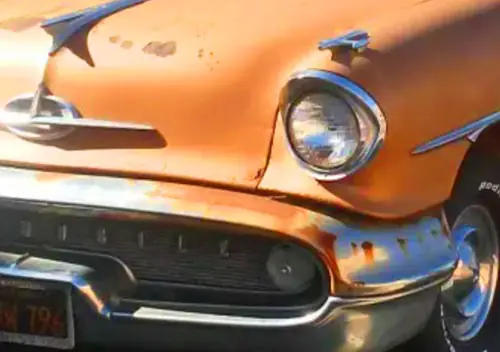
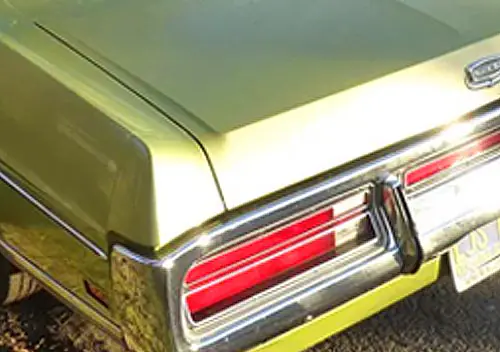
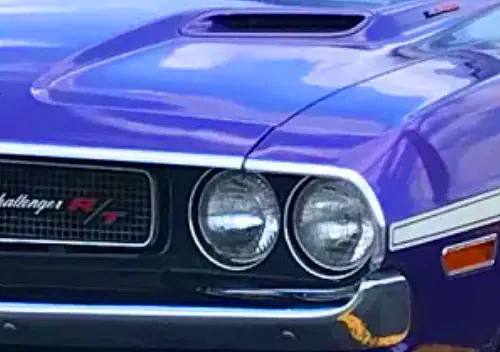

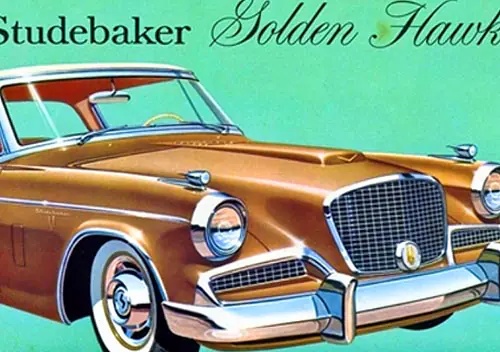
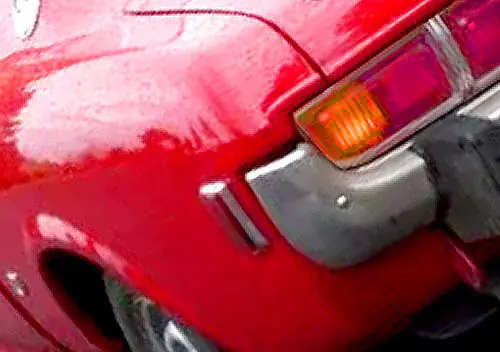
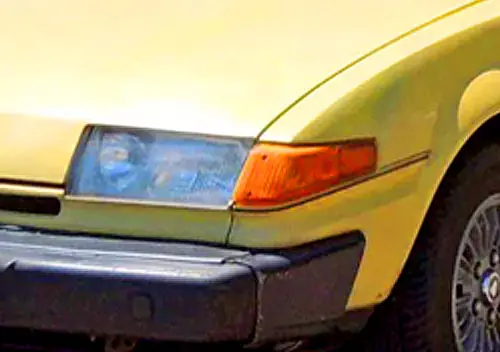
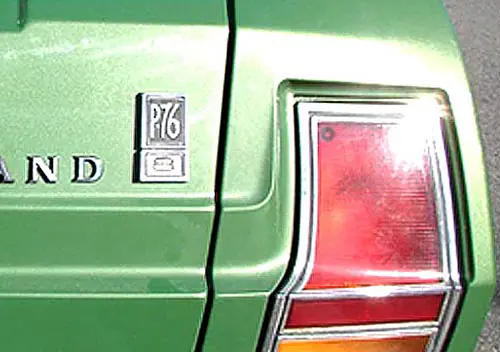
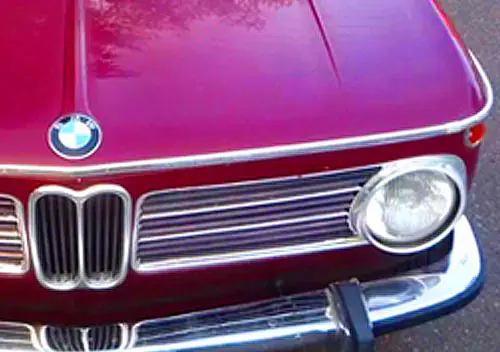
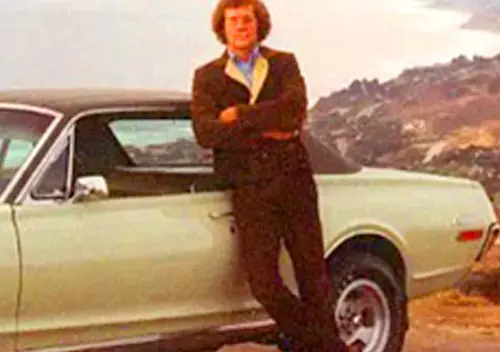
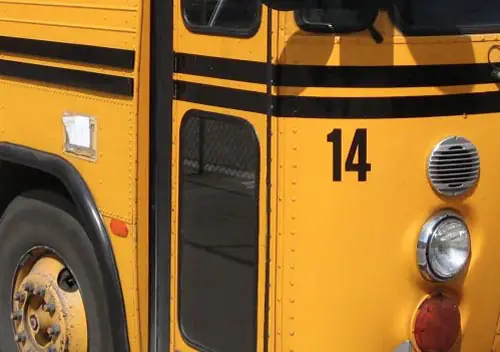
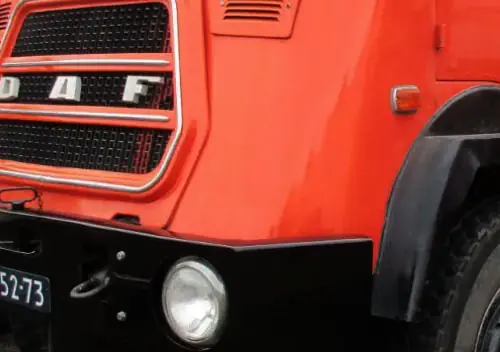
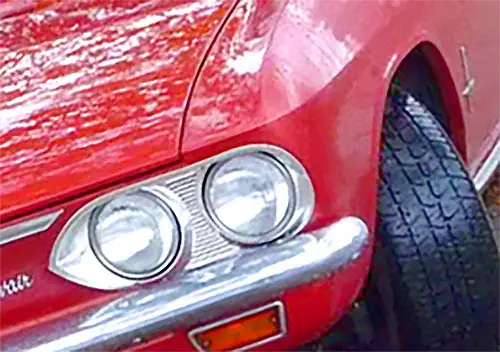
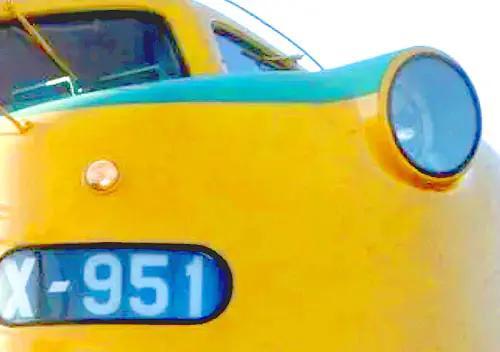
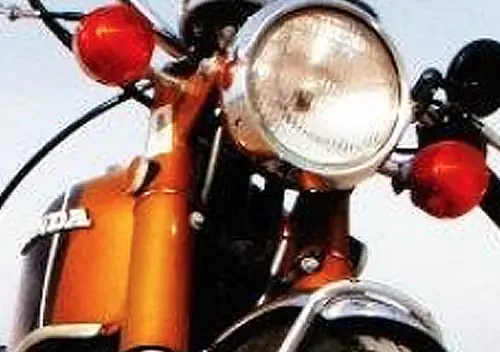
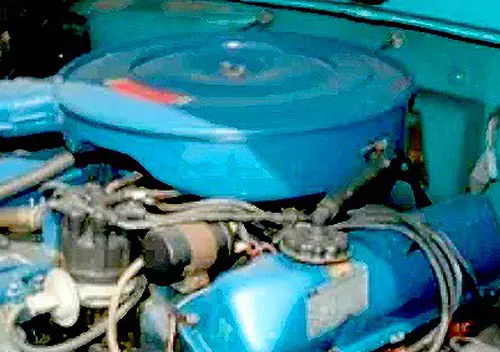
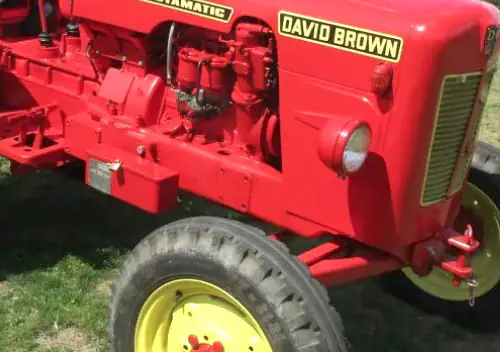


It IS a marvelous article. Thanks for posting.
…and Happy Canada Day!
Thank you for covering what has been an overlooked part of auto history. We think we know Canada, but we are too presumptuous in many ways.
Thank you; this helps clear up what had been rather murky territory for me.
The handful of times I have been to Canada has always revealed some automotive surprises. The Chevrolet Corsica / Pontiac Tempest. The front wheel drive Plymouth Caravelle (aka Dodge 600) / Plymouth Volare. That’s just what is at the top of my mind!
In doing some recent research, I also found that Ford also had different engine availability, such as the 352 (5.8 liter) introduced in the U.S. in 1958 but not available in Canada until 1960. In lieu of the 352, Canada received the 361, the base engine in the 1958 Edsel.
I experienced Canada Day in 1984 during a trip there. Happy Canada Day!
Also, from 1963-65, big Fords had no small block engines in Canada. From the six, you jumped right to the 352, which in Canada had a 2-barrel carb. Our ’65 Galaxie had a 352-2V, these had no callouts on the side, unlike the US 4V versions. In 1966, only the 390-2V was offered in Canada. Factory AC was not offered in Canadian Fords until 1967, and if you wanted it, you had to take a US sourced car. The Oakville factory was finally set up to install AC for 1968.
Don’t forget too that Canadian Fords didn’t get the OHV V8’s until 1955 too. The 1954 Fords still used the flatheads in Canada.
Nor did Fords in Godzone though all post war Fords here featured the Mercury Flathead rather than the smaller Ford engine.
I hear Ford NA built a 6? we never knew.
Another big contributing factor to the existence of these unique cars (and at Pontiac and Chrysler also) was the tariffs that US imports were subject too. This often resulted in strange selections for engines, based upon what the lines in Canada were producing. With the advent of the 1965 Auto-Pact, the great grandaddy of NAFTA, the raison de etre for unique Canadian models began to vanish. By the early 70s, most product lines were rationalized on either side of the border, but as noted above, certain anomalies such as the Tempest, Turbo Firefly, and Chrysler-badged Dodges persisted.
My first trip into Canada was a family vacation in 1973. These Canadian Fords were some of the first things I noticed after crossing the border into Windsor. The mid 60s Meteor Montcalm and the Rideau 500 seemed fairly popular, as did the Parisienne. I didn’t quite understand their purpose or their place in the lineup then, but I knew that they were basically the same U.S. cars I knew, but somehow different.
Thanks for this tour. Since coming to CC, I have gained a bit of an appreciation for some of the subtle differences in the Canadian market, both in law and in the preferences of buyers.
And a Happy Canada Day to my northern neighbors.
Thanks David for this article. Being Canadian and growing up in BC during the 50’s and 60’s this is all very familiar territory for me, but even so I learned a lot from your commentary. And of course the photos brought back lots of memories. Happy Canada Day!
When I was just a young boy in the late 60s, my father worked at a Lincoln-Mercury dealer and typically drove cars like the Montcalm (altho there was also the very memorable Cyclone GT). Now I understand why, whenever we took motoring vacations in the US, people were always looking at our car and asking questions about it.
This was a great read to accompany my morning coffee on Canada Day. Thank you David.
PS: The front clip on the ’61 Monarch shown in the ad is sublime–to my eye much nicer than the Mercury grille it was based on.
Thanks for this very comprehensive guide to the parallel world of Fords up north. I only wish I’d had this along on our one trip through Canada, in 1964, from Windsor to Niagara Falls. My car-spotting 11 year-old eyes were mighty confused by what I saw.; it was like being in a dream. Everything so familiar, yet so strange.
Yes, that ’61 Monarch grille, with the gold crown in the center, takes the cake. Unbelievable.
The crown looks like it was the inspiration for the Wagon Queen Family Truckster.
That’s because they actually used real Monarch Country Squire for that movie, right?
Thanks for the story. Living across the river from Windsor, I remember many of these cars from my youth. Those and the Valiants with the Dodge rear end, Dodges with the Plymouth rear end.
Excellent write up, probably the best I have seen on the internet about these Canadian Fords. I am impressed at how many pictures you were able to find for each model year.
I have some of the production numbers, unfortunately none of my 1952 numbers break down for each model. I do have some other numbers for other years to show how rare the convertibles were:
1954:
Rideau Special Sunliner Convertible – 277
Rideau Convertible – 26
1955:
Rideau Sunliner Convertible – 201
1956:
Rideau Sunliner Convertible – 479
1957:
Rideau 500 Sunliner Convertible – 646
I think the rarest of all is the 1959-60 Monarch Sceptre series, equivalent to the Mercury Park Lane with the 430 on the massive 128″ wheelbase. Apparently only 65 1960 two-door hardtops, as shown in the illustration, were built. I’ve seen a ’59, and there are some pics on the web, but never a ’60 and not even a photo to be found. I wouldn’t be surprised if there are no surviving ’60 Sceptres at all.
Thank you for the addition of the production numbers. Canadian specific information can be very hard to find.
All the photos are mine except for the brochure ones obviously. Most are shows rather than curbside but I tried to include as many of those as possible.
I am the proud owner of a baby-blue cream top 1960 4door 6cylinder 3on the tree Meteor. It has been barn parked for several years but is in good if dusty shape. Could you tell me the displacement of the motor.It was a very smooth operating machine and I would love to get it back in operation.I would appreciate any suggestions Thanks Larry davy @ shoreyfarm@gmail.com
223 ci six @145 hp.
Do you have the convertible production model and totals for 1959 please
Fascinating history, thank you for finally explaining why all the brands – that always confused me as a child. Lots of Canadian vacations, as we were a very devout Catholic family, and I’d probably seen ever holy site in Quebec by the time I was 15.
Frontenac was a name also tied to the Chevrolet brothers sometime during or after their stint with Billy Durant. I believe Gaston Chevrolet won the 1920(?) Indy 500 in a Frontenac.
I would have associated the Frontenac name with Model T-era racecars
Great article, thanks for posting this. There are a lot of little differences in Canadian market cars even today, but nothing like the days when we had our “own” brands. Meteors and Mercury trucks were quite common when I was a young guy, and a friend’s older sister had a rusty Frontenac in the mid ’70s.
GM and Chrysler also had their share of unique Canadian market cars, like Acadians, Beaumonts and Fargo trucks to name a few. We even had our own brands of heavy trucks, like Hayes and Pacific. All gone now, but it’s fun to look back on them.
Thankfully, we do still have our own unique brands of beer, and it’s time I put a few on ice before the family shows up. Happy Canada day to all the Canucks out there!
Maybe I’ll tackle the GM for next year. It can be a little confusing as well.
I have a friend that is 99% done with a full restoration on a 1951 Ford Meteor 4 door. He is lacking a couple trim pieces. Such as the driver side fender trim, hood emblem, and center star. Any ideas where these could be sourced from ?
Thanks in advance.
Pacifics came to NZ for logging work strictly off road as they could gross over 100 tons special reinforced concrete crossings were put in so they could cross public highways were installed for those trucks.
Great article David.
One thing confuses me now. As a kid, Meteors always seemed inferior to Fords, possibly because even then my know-it-all young brain rejected that flashy Meteor trim as a little unsophisticated and tasteless. But if they were Mercurys, then I assume they must have been slightly more expensive than the (IMO) better-looking Fords. At the time I would have scratched my head as to why someone would pay more for a Meteor than a Ford!
It gets more confusing for the Monarch. I rather liked them in the 1950’s (full disclosure – I spent my early childhood in ultra-Loyalist New Brunswick, when pictures of the Queen still hung on every wall, the Red Ensign was still the flag, and it was ‘Empire Day’ in May that was known as ‘firecracker day’ – not July 1).
Monarchs obviously had to be more expensive than Fords – but my guess is they were probably priced below Mercurys. Talk about complexity of choice, for a market of 15 000 000 spread across 6 time zones.
As a postscript, I’ll repost a surprising (to me) pic of a 1958 Australian Ford Mainline ute – the ’55 Meteor tooling was clearly crated up & shipped from Oakville to Geelong.
Happy Canada Day, Australia!
The 1971-’76 Meteors were actually quite a bargain at the time. You got the longer Mercury wheelbase and a standard 351 at essentially the same price as a Ford.
Yeah the Aussie market was quite restricted NZ however got Canadian Fords model by model until the early 60s when it was decided we could do with UK Zephyrs and Australian Falcons, and only very restricted US models. Zephyrs and Zodiacs sold really well Faslcons after the initial rush faded from view nobody wanted a second one after the first one fell to pieces, it took Ford UK to build a lemon and Ford AU to finally build something worthwhile in 65/66 for Falcons to take off in the sales over the Zephyr Zodiac range and by 70/71 the change was complete no more UK large Fords available only Falcons on the lots.
More than once in the ’50 and ’60s they used the Meteor trim as a third- or fourth model year facelift to a Ford model packed off to Australia or elsewhere.
I’ve always found these Canadian specials interesting, were the dealerships id as Ford-Monarch or Mercury-Meteor dealers with their own signage, or were they just still Ford or Mercury signs?
The dealerships were signed as Ford-Monarch, Mercury-Meteor (and whatever else they were marketing at the time!).
“Now available at your Mercury…Lincoln…Meteor dealer!” is black-and-white-TV-era ad copy that is still stuck in my brain. Thank you Donald McDraper.
Also took the opportunity to go grab a quick shot of this ’53, owned by a neighbour.
I remember as a kid a small village 2 hours east of Edmonton with a garage (can’t really call it a dealership?) that had the Ford/Edsel sign. I wonder now how many cars that little “dealership” sold. Being in a rural area no doubt pickup trucks sold the most.
That first picture with the unmistakably Mercury styled ford sedans needs the caption – “On next weeks episode of Nova Scotia Five – O, RCMP Inspector McGarrett investigates…”
It was McGarrett’s Canadian cousin.
Which one? Ian or his brother Gord?
Thanks for the pic. No idea the RCMP used Meteors for cruisers.
Book ’em!
Ahem…book ’em, eh?
Thanks for helping de-mystify what had been very hard to comprehend for me. Though the sheer number of variations in parts, tooling, and model-specific trim pieces for what was a rather small market (by population) seems like it would have been hard to make a business case for…
and Happy Canada Day indeed!
Not quite the “alternate universe” of Austrailian cars, but still fun and interesting. More like create a few unique trim pieces, throw them in the Ford North America corporate parts bin, shake, and see what falls out.
Thanks for the article and happy Canada Day!
Thanks for this David. It’s always puzzling at a distance to see the changes manufacturers make for local tastes and preferences.
One day, I’ll have to run a piece on the variations BMC used for overseas markets, but bandwidth might prevent it…….;-)
Yeah Roger that would add some confusion to the site bring it on Ive seen most of them and owned a few.
Long ago I remember being baffled by the sight of a Mercury truck. I don’t recall if we were in Canada at the time.
Variations on US tech also occurred during WW2; Ford & Chevy of Canada both produced & collaborated building the Canadian Military Pattern truck in huge numbers for Commonwealth forces. There was also a derivative of the M3 tank with a proper turret, the Ram. Like its Aussie counterpart, the prototype Sentinel, it was made redundant by the M4 Sherman..
The Ford/Chev Monkey face truck I saw one at a show recently cant find a picture unfortunately quite rare here but more capable on steep going than the Ford/Chev/Bedford Quad
Great detailed article. A friend of mine used to have a 1960 Meteor 2 door post that he sold to an american who already had a 1960 Ford, 1960 Mercury, 1960 Edsel and 1960 Lincoln!
Chrysler and GM had similar strategies in Canada. Dodges that had Plymouth dashboards, Chrysler 300s that looked like Newports from the rear, Fargo trucks for Chevy dealers, Chevrolets dressed to look like Pontiacs…
Even my Canadian 1965 Buick Wildcat has trim from an Electra 225 inside as the Electra 225 wasn’t built here and while the Electra 225 built in the US was distributed by GM dealers, it was taxed as an import…
“… Fargo trucks for Chevy dealers…”
You mean Fargo trucks for Plymouth dealers. 😉
Maybe Chevy dealers had them used but you’re right, I meant Plymouth!
Fargo for 1939 one of 50 RHD made very little changed until the pilot house models of the 50s
Hey, that’s my Meteor! Yes, I do have a ’60 Edsel and a ’60 Ford, but no Mercury or Lincoln….yet! After a 7 year delay, she’s finally at the shop, getting roadworthy again. I plan to drive her to the Edsel convention in Corning, NY in a few weeks.
Very nice Doug!
Great! It’s been already 7 years?! I really liked that car! Congratulations Doug!
Yes Phil, she arrived here on July 9, 2007. Here she is fresh off the truck! One of these years, I hope to take her on a homecoming trip back to Montreal and then to her birthplace at the Oakville Assembly Plant.
Here’s a little known fact. The ’60 Meteor tail lights were the same as the ’59 Edsel, which were originally on the ’58 Lincoln Continental. Each year, the mold was slightly modified to fit the next application, but it was basically the same tail light lense used for all 3 years.
The 1960 Frontenac also used that same 1958 Continental/1959 Edsel/1960 Meteor taillight lens.
Edsel fan here,especially the 60,also 60 Starliner fan
I’ve loved Edsels since I saw my first one as a 5 year old in ’64. I’ve owned my ’60 for 18 years.
I’ve always thought that the ’60 Edsel would have looked better with the Meteor rear treatment, which would have provided some continuity from the ’59.
So a Canadian Mercury was an American Ford with a busier, tacky, uglier grille?
Well, not completely.
True – you could buy a Ford body with a tacky ‘star’ grille, badged as a Mercury. And you could buy a Mercury body with the tacky ‘crown’ grille, badged as a Ford.
But you could also buy a Ford body badged as a Ford, and a Mercury body badged as a Mercury. If you wanted. I think. Just don’t ask me about wheelbases.
Bizarre cars…..
Thanks for a great read David.I saw a well used 50s Meteor on a Canadian holiday as a kid in the 60s which baffled my car mad Dad,brother and my self,we’d never seen or heard of a Meteor.It must have been even more confusing when the Mercury Meteor went on sale!
Lucerne and Sceptre
It’s funny that Buick used those names from these Canadian Fords for two of their early nineties concepts!
Apparently Buick was quite good as using names from other brands. Riviera was previously used by American Bantam, Limited was previously used by Olds, Park Avenue was previously used by Cadillac, Regal was used by Studebaker and Encore by Renault!
The exceptions being the Toyota Century and the SportWagon models from various brands. These were originally Buick names.
Excellent write up. 🙂
In the ’60s one of my cousins in Ontario was in a minor car accident, but it sounds much cooler to say he was hit by a meteor. 😉
Mercury trucks are not unheard of at car shows in the Detroit area, but I was very surprised to see a ’51 Monarch in Lansing a few years ago. They had driven all the way from Alberta if I remember correctly.
Hit by a meteor – that is a good one!
Wow, that was fun. The rear glass on the 1959 Monarch II Lucerne (the red 4-door) is gorgeous, maybe the prettiest I’ve seen.
Ford of Canada was a separate company with “all Ford patent rights and selling privileges to all parts of the British Empire, except Great Britain and Ireland” (Wikipedia). It was “assimilated” into Ford US in 2003. Ford of Canada was responsible for all Ford car production in Australia, NZ, South Africa, and India as well as exports.
Superb overview and much appreciated. I love seeing these regional variations and your chronological narrative reminds me of how good Ford styling of the first half of the 50s was compared with the second half. Many thanks, David. This is definitely an article I will be returning to for reference.
1955 ad (Winnipeg):
Little did they know that the name of Ford/Meteor’s top model for ’55-’56 (pictured in the ad) would one day lend itself to what is arguably the most successful Canadian-built car of all…..
No more! It’s doing my head in. More combinations than a safe.
Seriously, thanks for a fascinating read. Look forward to seeing the GM side.
We got the Parisinne & Laurentian here in Aus- with Chev running gear.
And little tacked on rear indicators. Red indicators were a no-no.
Yes same here, I think more of the Canadian GM cars will be familiar. I saw a 1968 Chev (from memory) at a show that stood out as being an original Australian market car rather than a more recent import because of some tacked on indicators stuck on the back, that looked like they came from a utility trailer.
I’m late to this party because I was out partying for Canada Day yesterday. 🙂 This article was a great read, and judging from all the pictures, you’ve been doing the research to write it for quite some time, David.
I wasn’t aware that FoMoCo kept the Meteor marque alive until the mid-70’s. Chrysler started winding down Canadian-specific models and trim levels between 1965 and 1967 to harmonize everything when the Autopact came into force. The notable exceptions being Fargo trucks, and some Dodges branded as Chryslers in Canada so they could be sold at both Dodge-Chrysler and Plymouth-Chrysler dealerships.
Great read David, thanks for putting it together. Somewhere in my collection I have a 1974 Mercury brochure with pictures of Meteors. I’ve always been fascinated with Canadian cars, so thanks!
My aunt and uncle owned a Frontenac in the Sixties as a second car for my aunt. My uncle drove a ’64 Custom 500. The Frontenac was a light green, if I remember correctly, and it’s the only one I’ve ever encountered.
Did Ford Motor Company of Canada (not Meteor Niagara) offer a Customline 2-door sedan in 1955?
I went home from the hospital in 1951 in a Meteor.
In later years my dad owned a 56 Meteor Niagara then a 56 Monarch with a 312 and 3 on the tree. I did some of my learning to drive in 1966 on that Monarch. I put it into a ditch just south of Lloydminster.
The picture is from 1961.
photo taken in 1952, here is a 51 ford in High Park, Toronto. Credit Toronto public library. Funny place to park though, the buildings in the background were restaurants.
with the photo
with the photo. It a good B&W photo if the system will accept it, it’s only 600K file size.
last try from a different PC. This is a jpg file converted from a *.png source. Sorry for the multiple posts.
This is the most interesting and detailed story on the history of Canadian Ford products I have ever read! Being Canadian, I was always fascinated by the unique marques, and car models we had over time.
My sister has a 1959 mercury Montcalm in great shape drives it occasionally to local car shows . What would the value of such a car be ?
You forgot Merkur. It was sold in Canada as well.
I just ran across this article while browsing on the internet today for Canadian Ford products and there history. As a child in the 1950’s I would see Canadian Fords, Meteors and Monarchs show up in Lake George, NY where I spent my summers. I loved looking at the flashy Canadian-specific cars.
Interesting roof styling on the red ’59 Lucerne, with the top dropping down slightly on the rear window, rather than being in a straight line.
Does anyone recognize this hood ornament?
Here is a 1961 Meteor Montcalm. The Canadian Meteors for that year had different trim from the U.S 400 and 800 Meteor. http://forum.studebakerdriversclub.com/showthread.php?60700-Orphan-of-the-Day-04-08-1961-Meteor-Montcalm
In mid-1963, Mercury introduced a Canada-only low-priced model of the Mercury, called the “400”. Base engine was a 6-cylinder. The reintroduced for 1964 Meteor series essentially replaced the Mercury “400”.
This is the most discerning article about Monarchs and Meteors that I have found so far! Growing up in Schenectady, NY in the 1960s, I remember seeing what seemed like a lot of late 50s and early 60s Monarchs and Meteors, one resembling US Fords and the other, US Mercurys for a few years. At some point in the early 1960s, they switched! I’m still looking for a pattern.
And then there were Pontiac Parisiennes and other GM models from Canada in the mix!
In re-reading this article, I stumbled across a line I must have missed the first few times 🙂
“The Mercury-badged vans seem to be less commonly seen than the trucks.”
Huh. I don’t ever recall seeing or hearing about a Mercury van. So I ran a Google search:
https://www.google.com/search?q=mercury econoline
Sure enough, there they are! Just judging by the images that pop up, the Econoline-based pickup seems more common than the van, but the vans clearly do exist!
Of course, Curbside Classic rarely misses a beat, so you can see one of the pickups here:
https://www.curbsideclassic.com/blog/cohort-sighting-mercury-econoline/
Neat! Never heard of this before.
Our family took a trip to the Canadian National Exhibition for the first time in 1962. I still recall vividly when we arrived at Niagara Falls, Canada to see the falls for the first time how me and my younger brother, both car-crazed eight and ten year olds marveled at the Fords and Mercury which didn’t look quite right and had unfamiliar nameplates. Since we were a Ford-loyal family, we peripherally noted the GM and Mopars that were also familiar but obviously different.
As Lincolns were the apple of my eye then, seeing what looked like a 1959 Ford but was indeed a Meteor with what looked to be a Lincoln Continental boxed-star emblem on the front hood was just bizarre. How could they apply that sacred emblem to anything less than a Continental!
Does that huge crown emblem on the front of the ’61 Monarch remind anyone else of the one on the Wagon Queen Family Truckster from National Lampoon’s Vacation?
Happy Canada Day!
I’ve missed this article a first time, so I was glad that it got re-posted.
All these years I thought for sure that the Frontenac was a Ford.
In addition to Canada-only marques and models, there were cars that preceded or outlasted their American cousins. Like, Custom 500s were built well into the Panther era.
Were Merkurs ever sold in Canada? (yeah I know, they were barely sold in the U.S.)
If you mean the Merkur Scorpio and the other one, the Merkur Xr4T1 or whatever the thing was called, yes we had them.
I know some intelligent person can explain this to me. Why did the US Mercury-based vehicles use US Ford based interiors? I was looking through a 1970 Canadian brochure and the LeMoyne had the same exact interior as my 70 LTD. I was surprised the dashboards fitted.
Does anybody know if toy companies,diecast modelers, dealer promotional models were made of the Canadian models. I just always wondered. I cant find anything on the internet so, I am assuming that they did not.
I have a fair number of catalogs of the Canadian Cars from the 1980s Meteors, Monarchs, Frontenac, Dodge, Chrysler and Pontiac.It is interesting that they made a 1963 Falcon with the same body until 1990 for Argentina and other Latin American countries. I have a 1980s brochure of one of these Falcons. People still see them on the streets in these countries.
I came by this article which has inspired e to go through my sales brochure collection which I have not done in decades but I just retired in June and I now have the time to do that.
Thanks for the great article. I guess it begs the question, if the idea was to offer another vehicle that was a step above Ford and lower than Mercury, why not just make one? Why two different brands? How confusing was it in the factory to keep all the swapped out trims and interiors straight?
Sorry, I’m a youngster, born in 1975 so I missed the glory days of these cars. It must have been fantastic to be on the design teams constantly dreaming up new shapes and trims.
The key factor, which was explained quite clearly in the article, is that this was a reflection of the relatively low population density in much of Canada. Meaning the little towns often could not support two Ford products dealers: a Ford dealer and a Mercury dealer. So it was decided to give each of these groups of dealers both a low price and a mid-price brand to sell. So regardless of whether your little town had a Ford or a Mercury dealer, you could get both a low end or medium-priced brand either way.
It’s actually pretty logical. Although I suppose the simpler and more obvious solution would have been to simply pair Ford and Mercury at all dealers, except maybe in the bigger towns and cities that could afford a stand-alone dealer of each.
They needed to keep up with General Motors and Chrysler. There were six dealership chains in Canada:
Chevrolet-Oldsmobile-Chevrolet Truck
Pontiac-Buick-GMC Truck
Ford-Monarch-Ford Truck
Meteor-Mercury-Mercury Truck
Plymouth-Chrysler-Fargo Truck
Dodge-DeSoto-Dodge Truck
The Canadian Pontiac and Dodge as well as the Meteor were priced just above the Chevrolet, Plymouth and Ford and a dealer willing to take a little less profit could actually get you a Pontiac/Meteor/Dodge for a little less than a Chevrolet/Ford/Plymouth. Dodge usually outsold Plymouth and Pontiac often outsold Chevrolet.
A 1960 Meteor photobombing a shot of our house in Lunenburg NS, on a snow day c. 1963.
Meteors were allegedly upmarket from the Fords they resembled, but the additional chrome splashes looked pretty tacky.